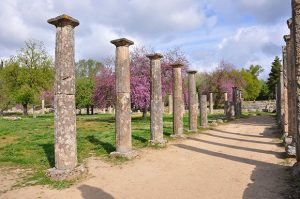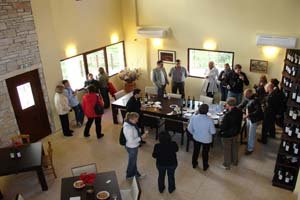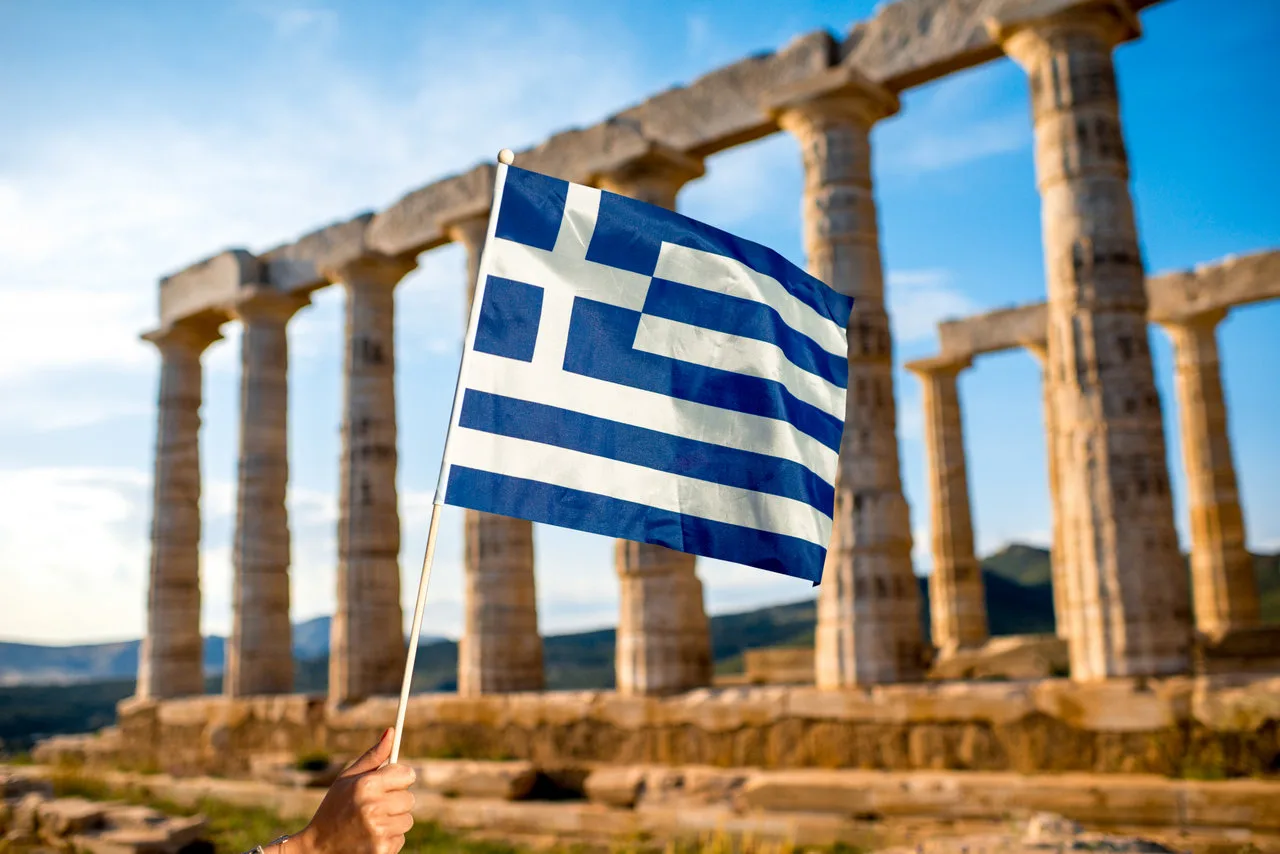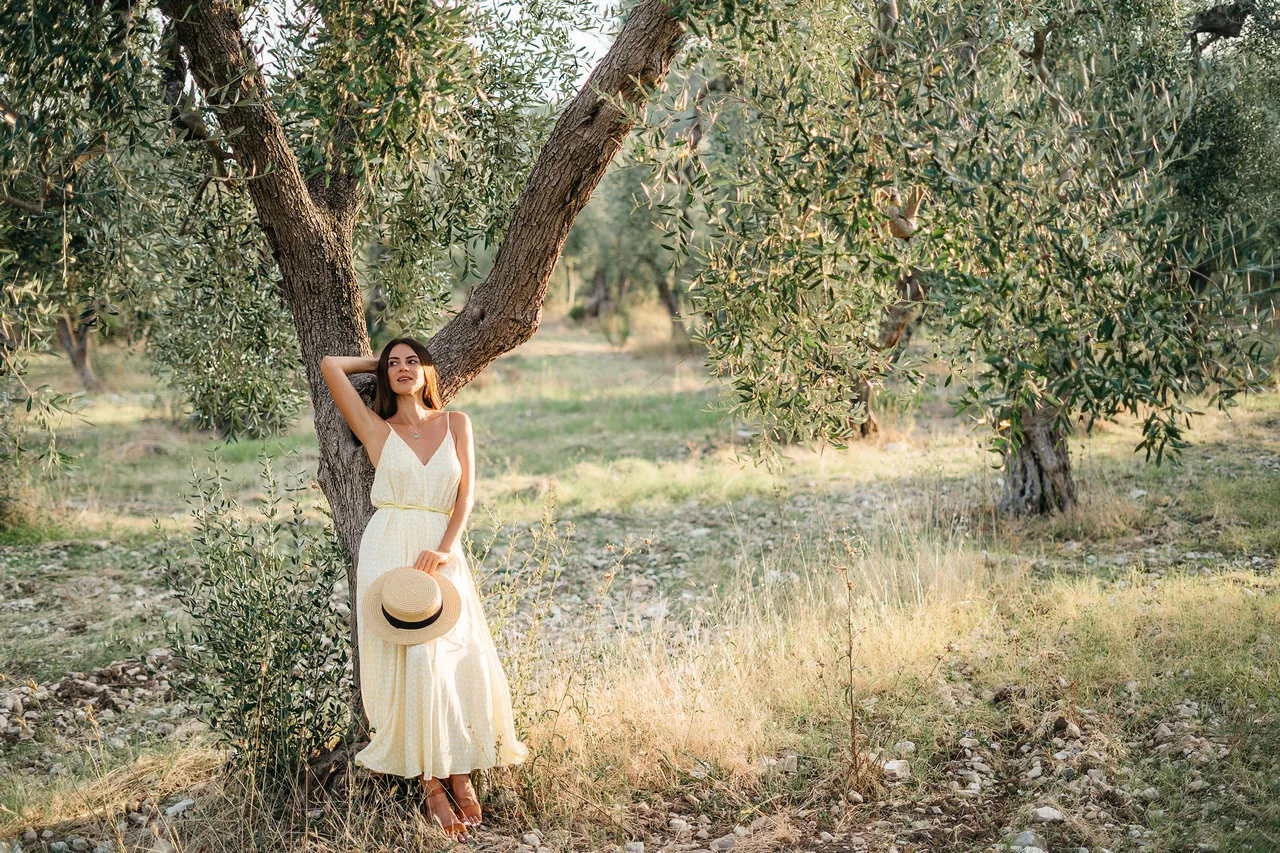Magical Wine Tasting 4-H Katakolon Private Shore Excursion
Overview
This tour is specially designed for those visitors arriving in Katakolon on a cruise ship and aspire to make the most out of their time. This private tour combines the excitement of reliving the Olympic Games, getting to know one of the most significant and historical sites in the world together with the smooth taste of the local wine production by the care of family making wine in their own vineyards.
Highlights of the Magical Wine Tasting 4-H Katakolon Private Shore Excursion
- An exciting 7 hours tour to ancient Olympia
- Visit the Museum of the Olympic Games and the original site of the Games
- A professional English speaking driver, who will pick you up and drop you off at your cruise terminal
- Visit a local winery with a great tradition in wine production including wine tasting
Description
Description of the private shore excursion tour to Olympia
The shore excursion tour starts from the port of Katakolon, where your cruise ship will dock upon arrival to the Ionian Sea. The port of Katakolon is the entry gate to the Peloponnese peninsula from the sea and will lead you to ancient Olympia, the birthplace of the Olympic Games.

Olympia has been a milestone and a starting point for all mankind throughout the ages since it has introduced the world to the spirit of the Olympics, which can again become the foundation of a more humane society.
Ancient Olympia was a significant athletic and religious center of ancient Greece, due to the Olympic Games held every four years to honor the father of Gods, Zeus.
The archaeological site of Olympia
You can visit the archaeological site of Olympia and the museum as well as the area in which the remains of ancient buildings were discovered. The museum in the courtyard houses works by contemporary Greek artists, while inside you can admire many of the findings of the excavations. At the same time, you can draw valuable information about your visit to the rest of the site.

Among the important buildings encountered here are: the Roman portico, the Prytaneion the Philippeion, Heraion where Hermes of Praxiteles was found, the Pelopeio, the Nymphaeum, the Registry and, below, the stage with the gallery of Echo.
The Stadium of the Olympic Games could accommodate 40,000 spectators and its perimeter is equivalent to 600 steps of Hercules. Besides the stadium lies the majestic temple of Zeus, the greatest monument in wealth, size, and symbolic value in the ancient years.
The Temple of Zeus is a Doric temple with exquisite decoration and is definitely still breathtaking. Here was the gold and ivory statue of Zeus, depicting him sitting on his throne. After the temple, the buildings below are the Deputies, South gallery, the Palaestra of the 3rd BC Century, and the High School which was a place of preparation of athletes.
You will also visit the Museum of the History of the Ancient Olympic Games, which hosts 463 ancient works, from the Temple of Zeus at Olympia, but also from other museums of the Greek territory.
The winery
 Our next visit is at the family-owned winery OLYMPIA LAND – LIAROMMATIS ESTATE. You’ll find the winery in the valley of the river Kladeos and just 2 kilometers from the heart of Anc. Olympia. Taste some of the wineries produce high-quality wines from local varieties, like the white Roditis, Assyrtiko, and the red Agiorgitiko.
Our next visit is at the family-owned winery OLYMPIA LAND – LIAROMMATIS ESTATE. You’ll find the winery in the valley of the river Kladeos and just 2 kilometers from the heart of Anc. Olympia. Taste some of the wineries produce high-quality wines from local varieties, like the white Roditis, Assyrtiko, and the red Agiorgitiko.
After the welcoming of the owners the tour begins by walking close to the vineyards, continue to the production area and the cellar with the oak barrels. At the end of the winery tour, you will taste two bottles of wine, olive oil, olives, and other delicacies.
You will have free time for lunch and shopping too.
You will end your private tour with our Athens Tours Greece driver taking you back to Katakolon and to your cruise ship.
Find Here More Shore Excursions From Katakolon To Ancient Olympia!
Details
Tour Type
- Shore Excursion – Private tour
- Activity level: Moderate
Included in the tour
- Transport by air-conditioned Mercedes-Benz vehicle or similar appropriate for the size of your group
- Your tour will be accompanied by a professional English-speaking driver or escort possessing in-depth knowledge of Greece’s history and culture. They will provide insightful commentary throughout the journey, guiding you until the entrance of archaeological sites and museums. However, please note that drivers are not licensed to accompany you inside these venues.
- If you desire a licensed state tour guide to escort you within the archaeological sites and museums, providing comprehensive insights and explanations, we can gladly arrange one for an additional cost. These licensed guides are freelance professionals, and their availability is subject to your tour date.
- When a licensed tour guide or English-speaking tour escort accompanies a group, the professional driver may not necessarily speak English fluently. Their role is focused on providing safe transportation.
- Pick up and drop off at your hotel in Athens. Extra charge for hotels outside Athens.
- Pick up and drop off at Piraeus Port or Athens Airport.
- Pick up and drop off at our terminal: Leof. Andrea Siggrou 37, 117 43 Athens, Greece.
- Accommodation is based according to availability (for multiple-day tours only)
- Road tolls and all local taxes
Excluded from the tour
- Wine tasting fee (for wine tours)
- Olive oil tasting fee (for olive oil tasting tours)
- Optional Gratuities
- Food and beverage
- Your private chauffeur/guide will discuss a program best suited to your interest and mobile abilities. Option for a professional tour guide with a state license at an extra cost. Read more for the Differences between a Tour Guide and a Tour Driver
Cancellation Policy
Additional info
- Dress Code: When visiting religious sites, shoulders and knees must be covered out of respect for the cultural norms.
- Please review our Terms & Conditions and Frequently Asked Questions
- Upon booking, an electronic voucher will be emailed to you containing our contact information, tour details, and all necessary instructions. This voucher serves as your ticket and proof of purchase. Please present a printed or digital copy of the voucher on the day of your tour to redeem your activity.
- City Tax for Hotel Stays: Effective from January 1st, 2018, a City Tax for hotel overnights is applicable and not included in our excursion rates. Clients will need to pay this tax directly at their hotel upon check-out. The amount per room is as follows: 5-star hotel: €4/overnight || 4-star hotel: €3/overnight || 3-star hotel: €1.50/overnight
- Opening Hours and Entrance Fees for Archaeological Sites and Museums in Greece
- Entrance Fees for Children from Non-EU Countries: Starting November 1st, 2019, children aged 6 and above from non-European Union (non-EU) countries will be required to pay the full entrance fee for Museums and Archaeological sites. For children from EU countries, the existing rates remain in effect. However, it is crucial to have their passports readily available to prove their nationality.
Persons with Disabilities
- Due to uneven surfaces, certain sites are not recommended for persons with walking disabilities or using a wheelchair. Such sites are the Acropolis, the Temple of Poseidon at Sounion, Mycenae, Delphi and Meteora
- In all cases, we recommend comfortable flat-solid walking shoes, sunglasses, and sunscreen.







